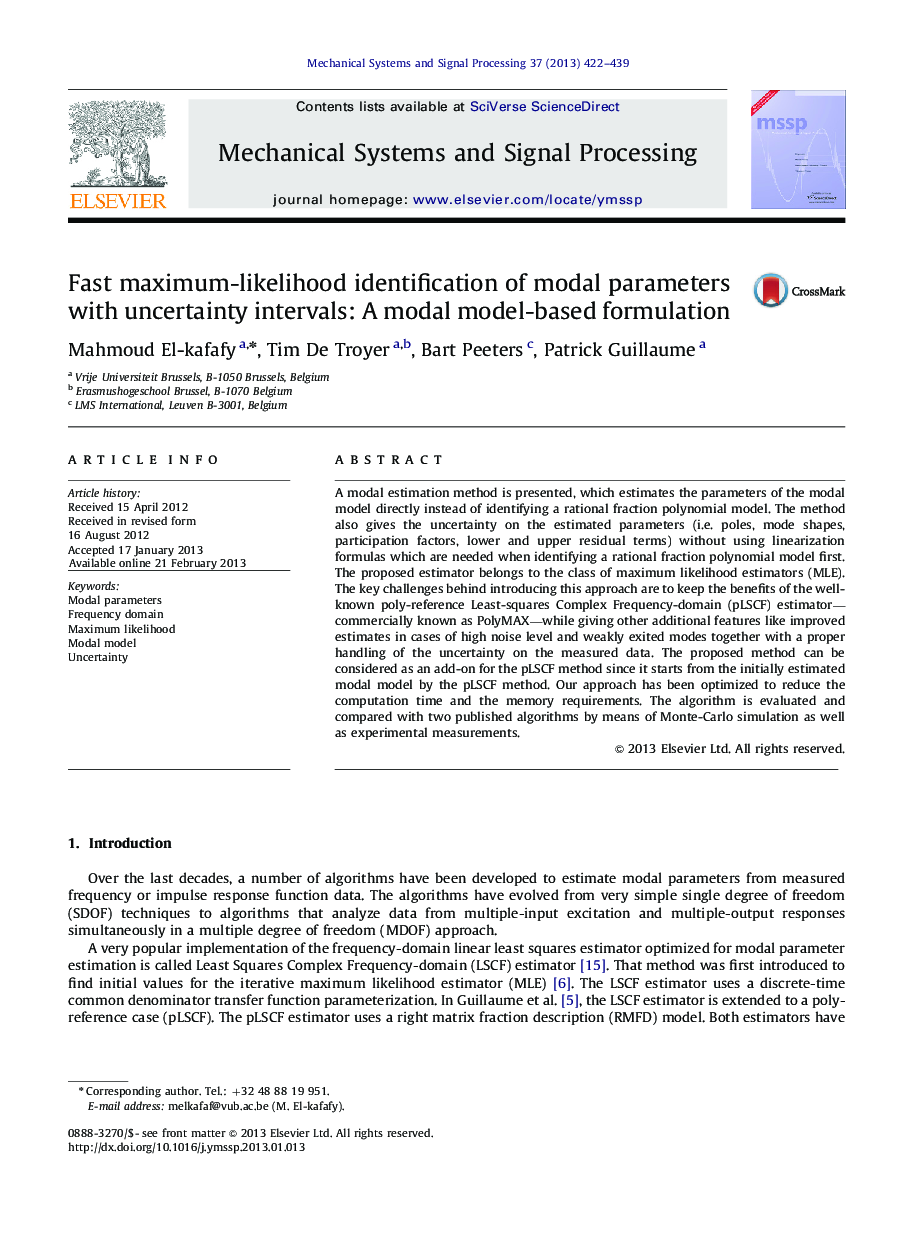| Article ID | Journal | Published Year | Pages | File Type |
|---|---|---|---|---|
| 561279 | Mechanical Systems and Signal Processing | 2013 | 18 Pages |
A modal estimation method is presented, which estimates the parameters of the modal model directly instead of identifying a rational fraction polynomial model. The method also gives the uncertainty on the estimated parameters (i.e. poles, mode shapes, participation factors, lower and upper residual terms) without using linearization formulas which are needed when identifying a rational fraction polynomial model first. The proposed estimator belongs to the class of maximum likelihood estimators (MLE). The key challenges behind introducing this approach are to keep the benefits of the well-known poly-reference Least-squares Complex Frequency-domain (pLSCF) estimator—commercially known as PolyMAX—while giving other additional features like improved estimates in cases of high noise level and weakly exited modes together with a proper handling of the uncertainty on the measured data. The proposed method can be considered as an add-on for the pLSCF method since it starts from the initially estimated modal model by the pLSCF method. Our approach has been optimized to reduce the computation time and the memory requirements. The algorithm is evaluated and compared with two published algorithms by means of Monte-Carlo simulation as well as experimental measurements.
► In this article, a modal model-based maximum likelihood estimator is presented. ► The method is compared with three other rational polynomial model-based approaches. ► The method gives accurate modal estimates in terms of their bias and uncertainty. ► Although this estimator uses a continuous-time model, no conditioning problem exists. ► The parameters uncertainty is obtained directly without using the linearization formulas.
